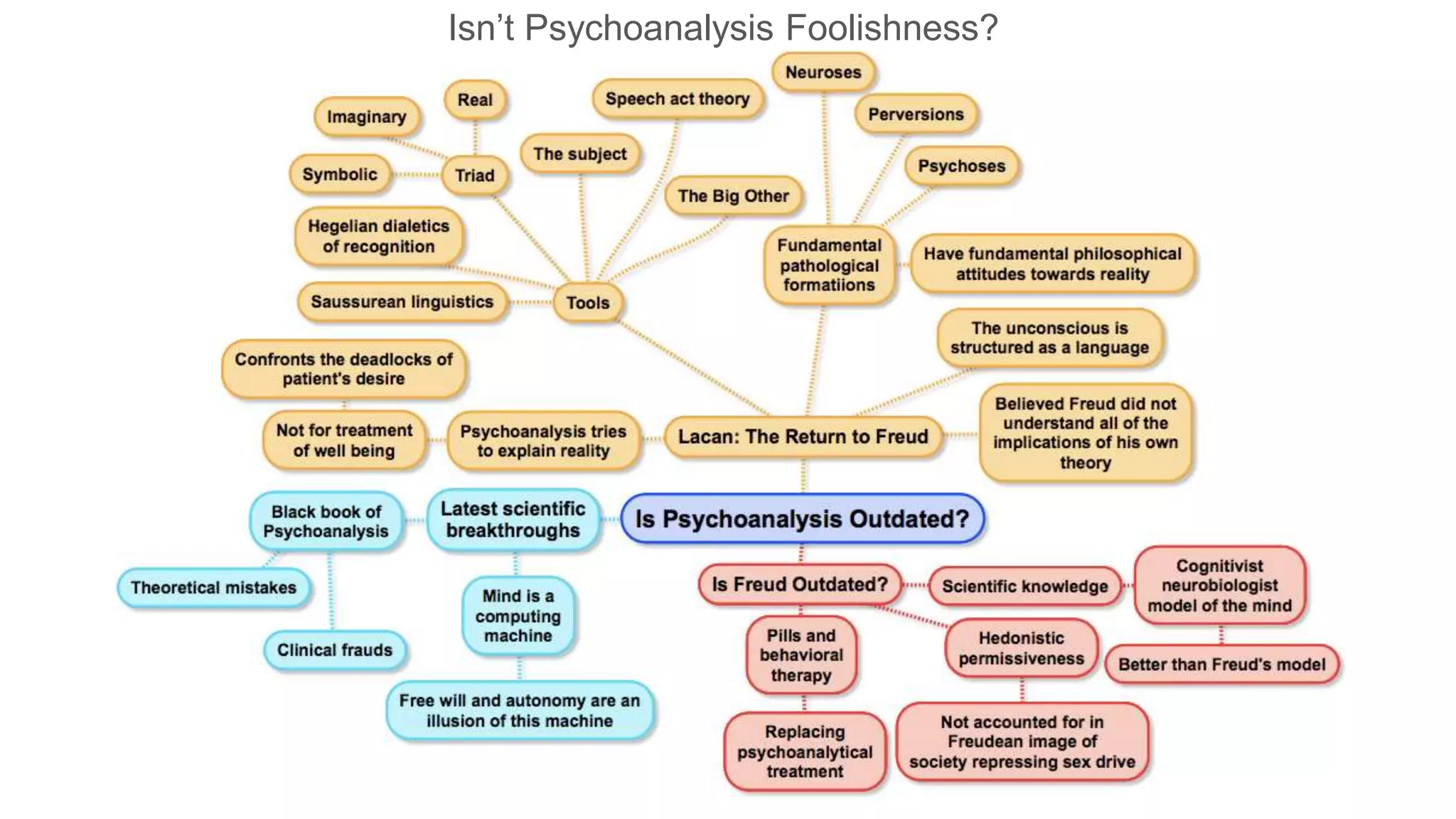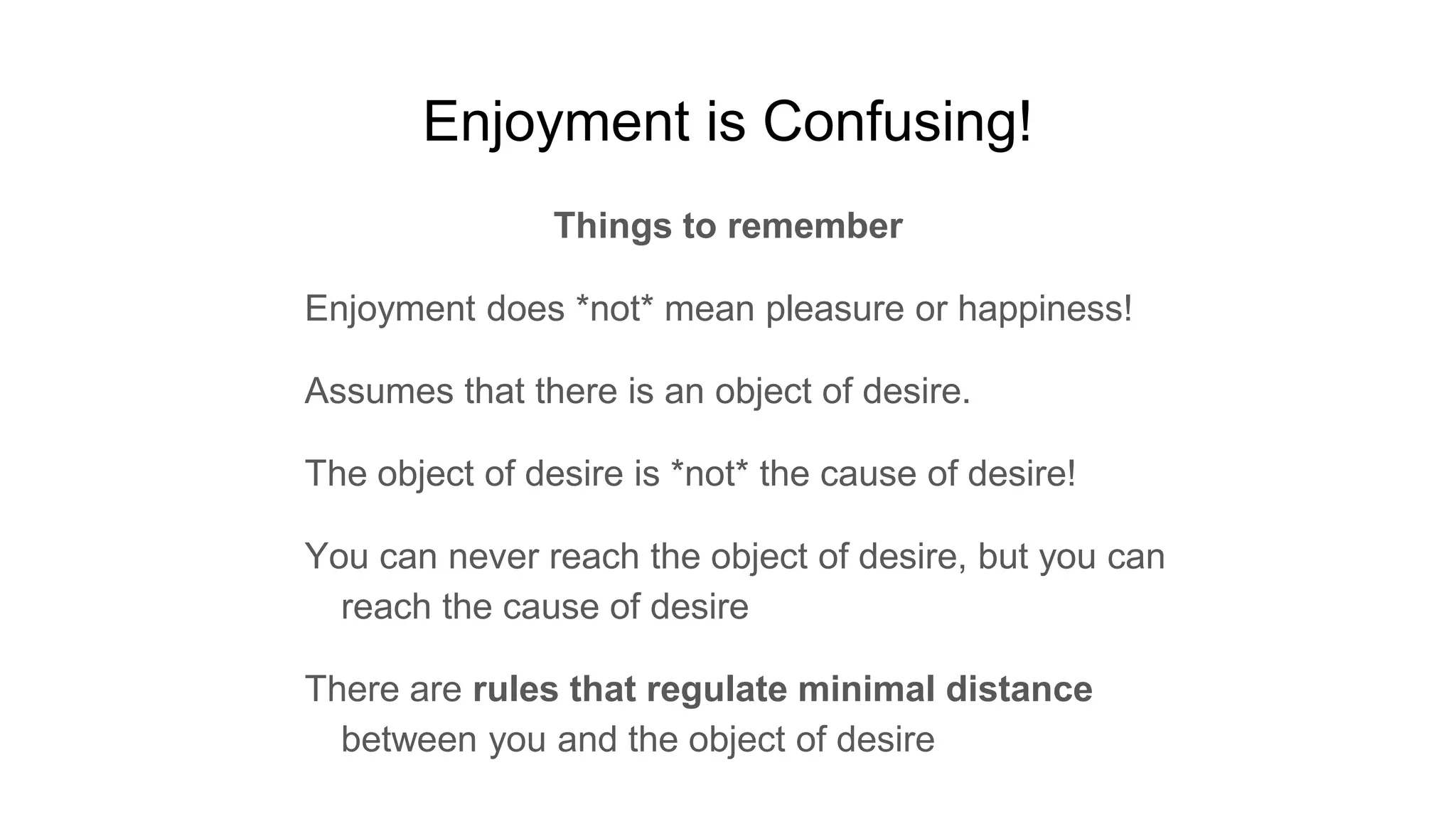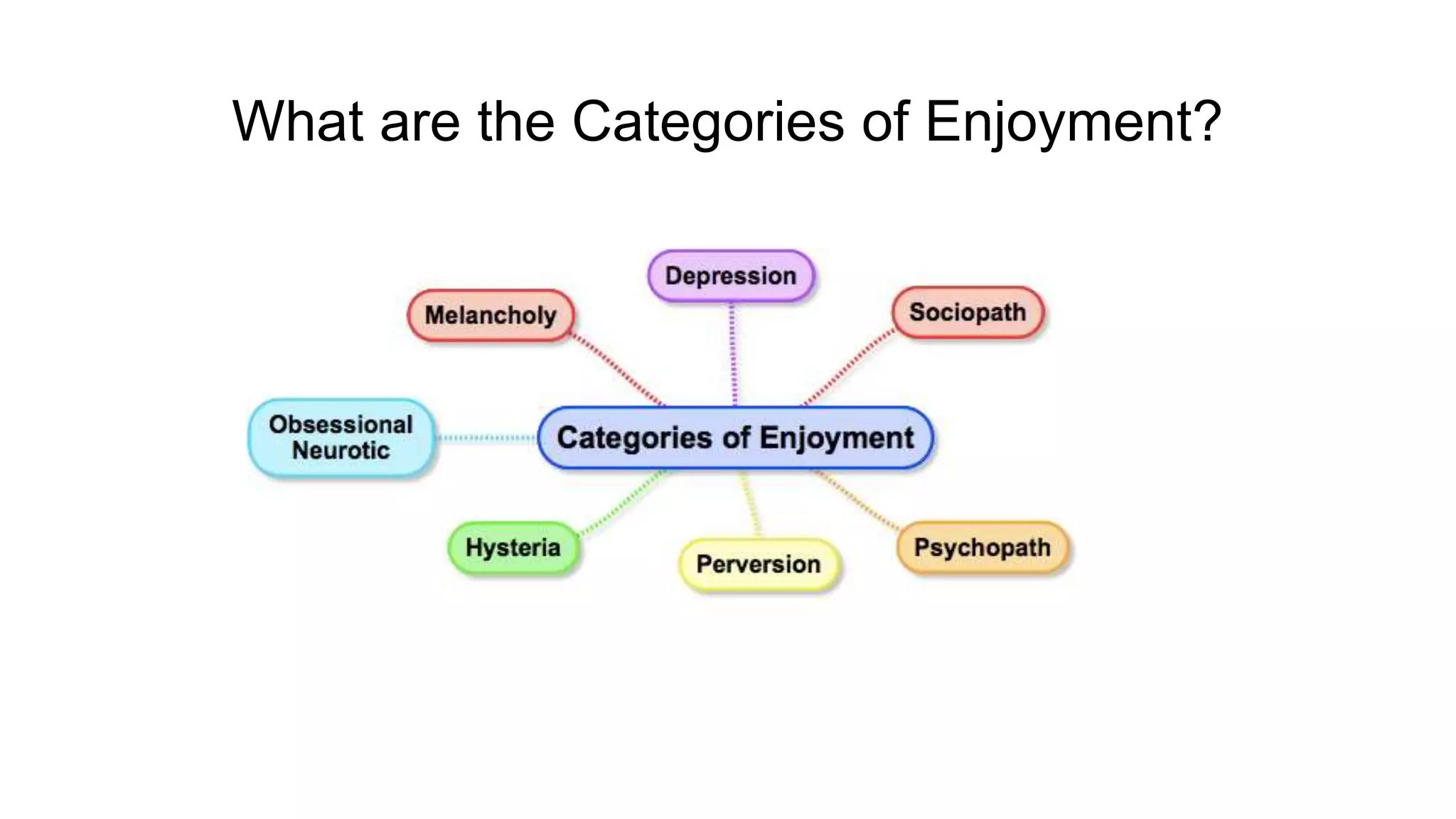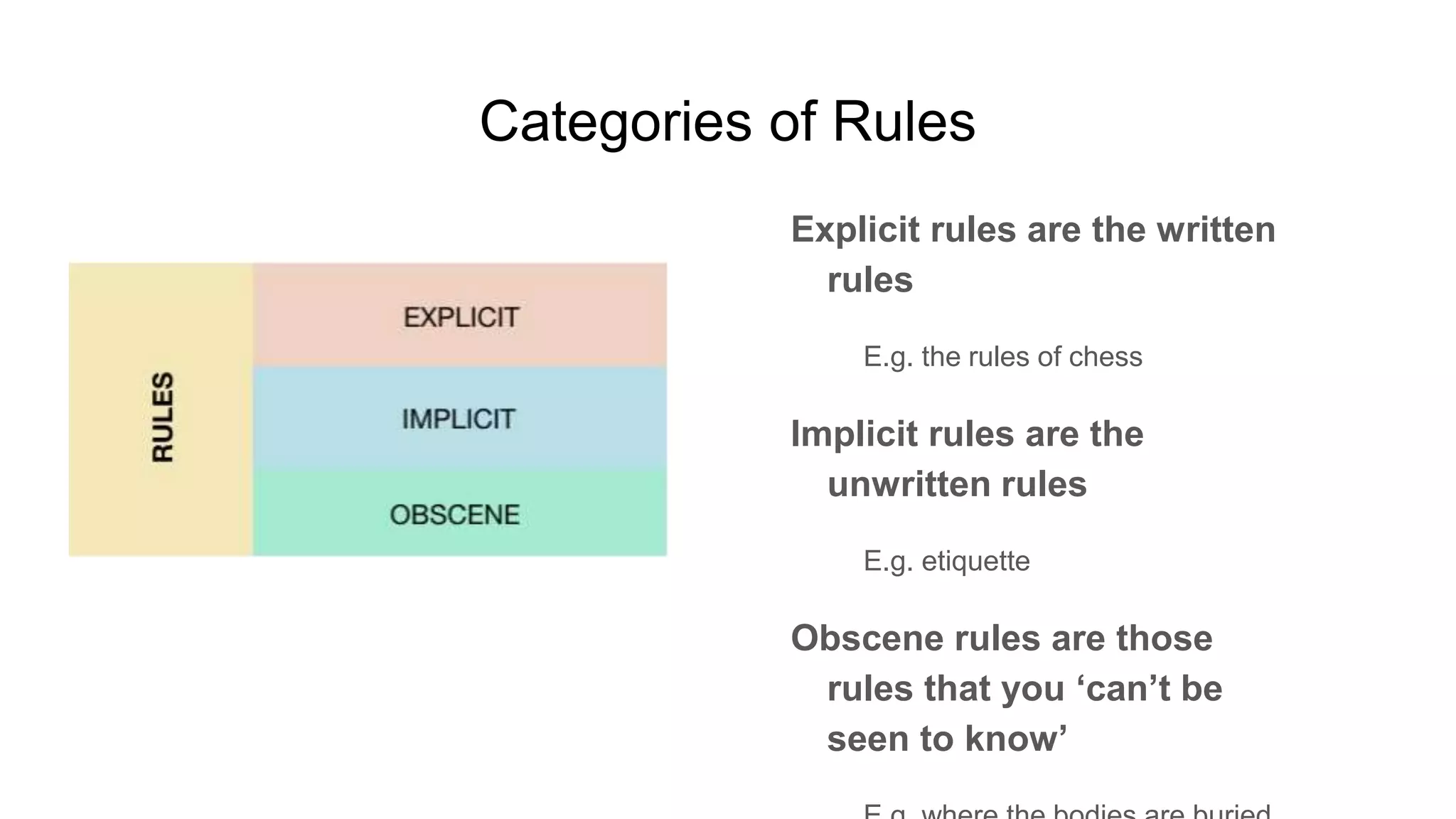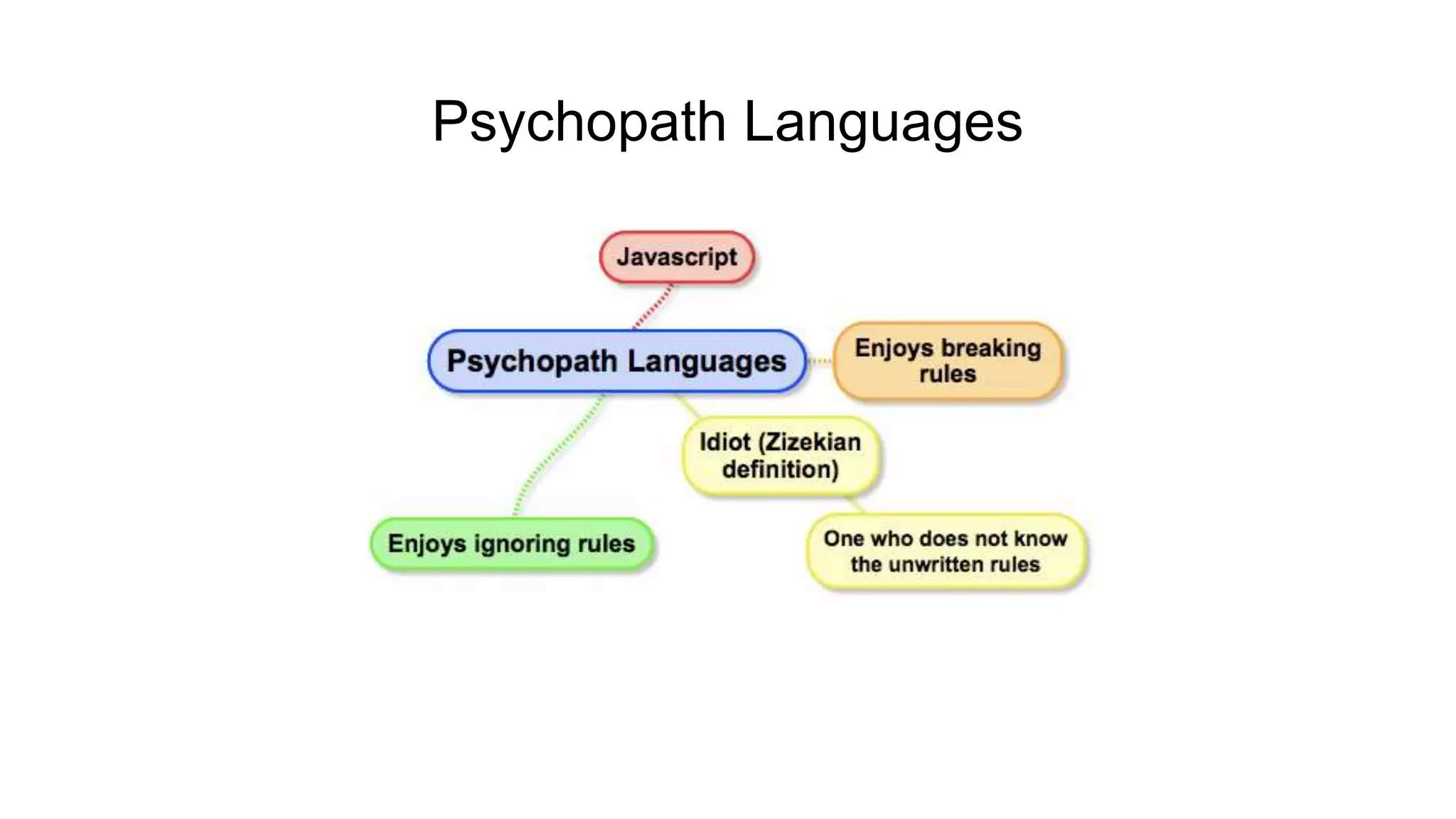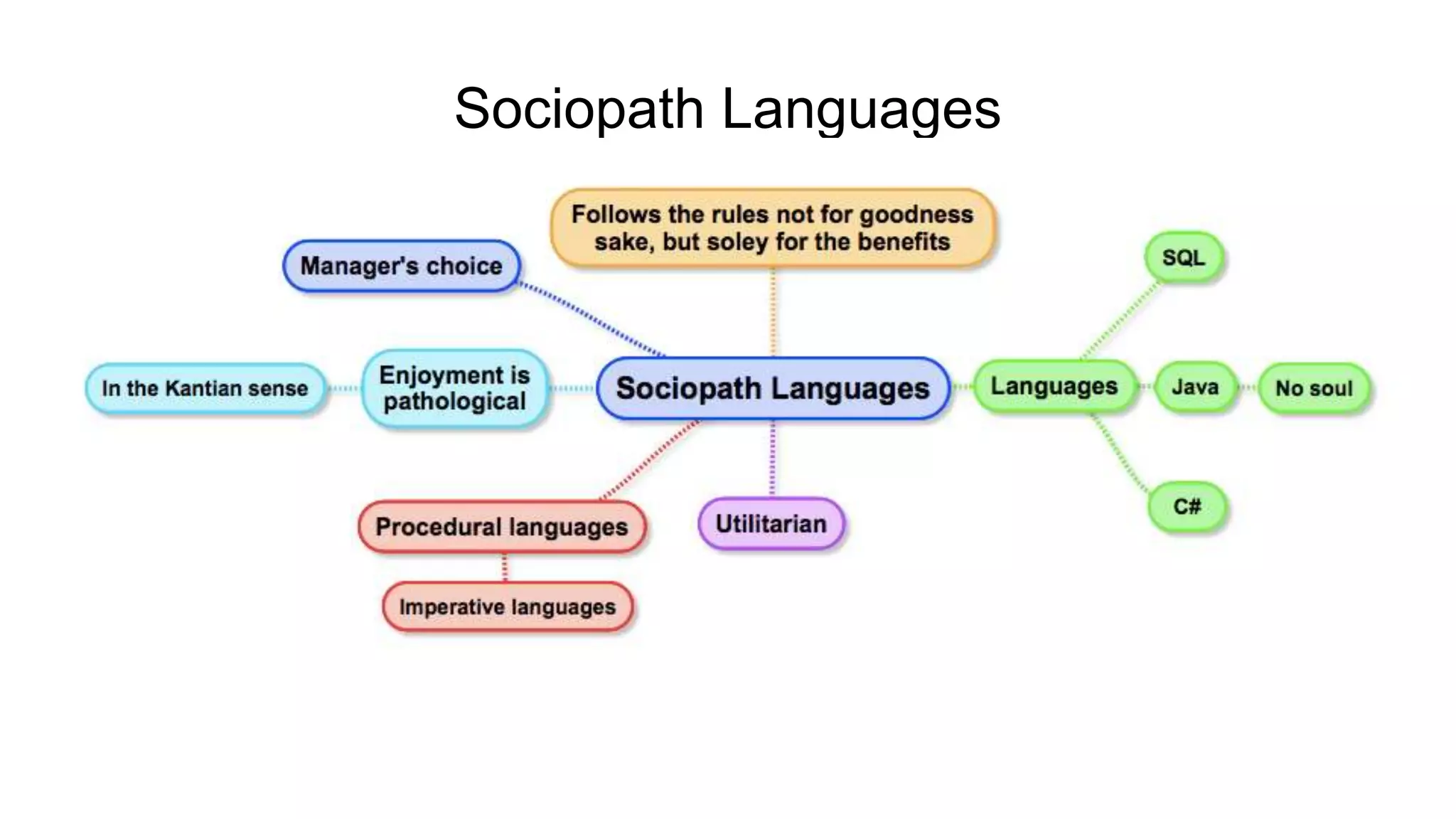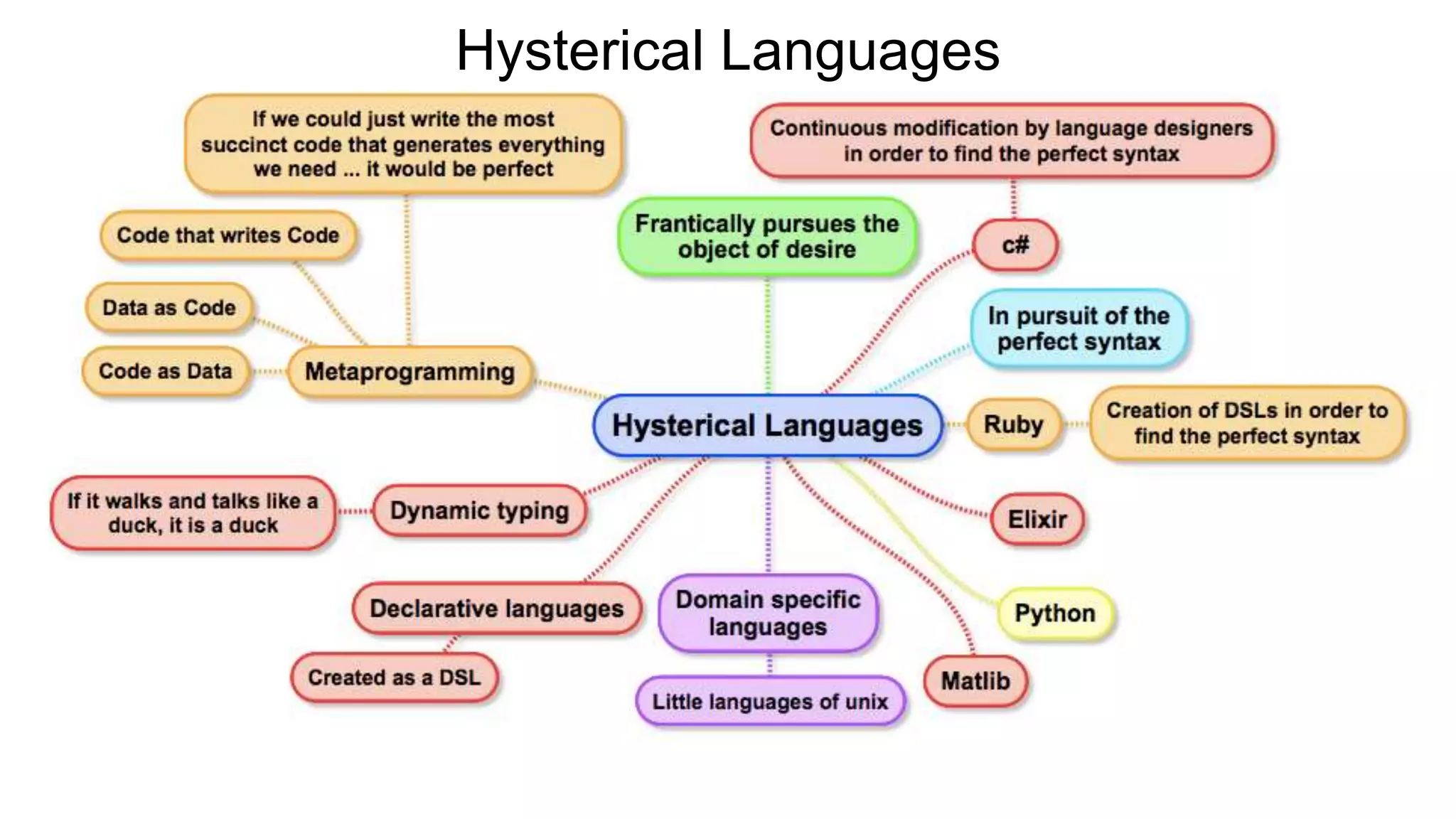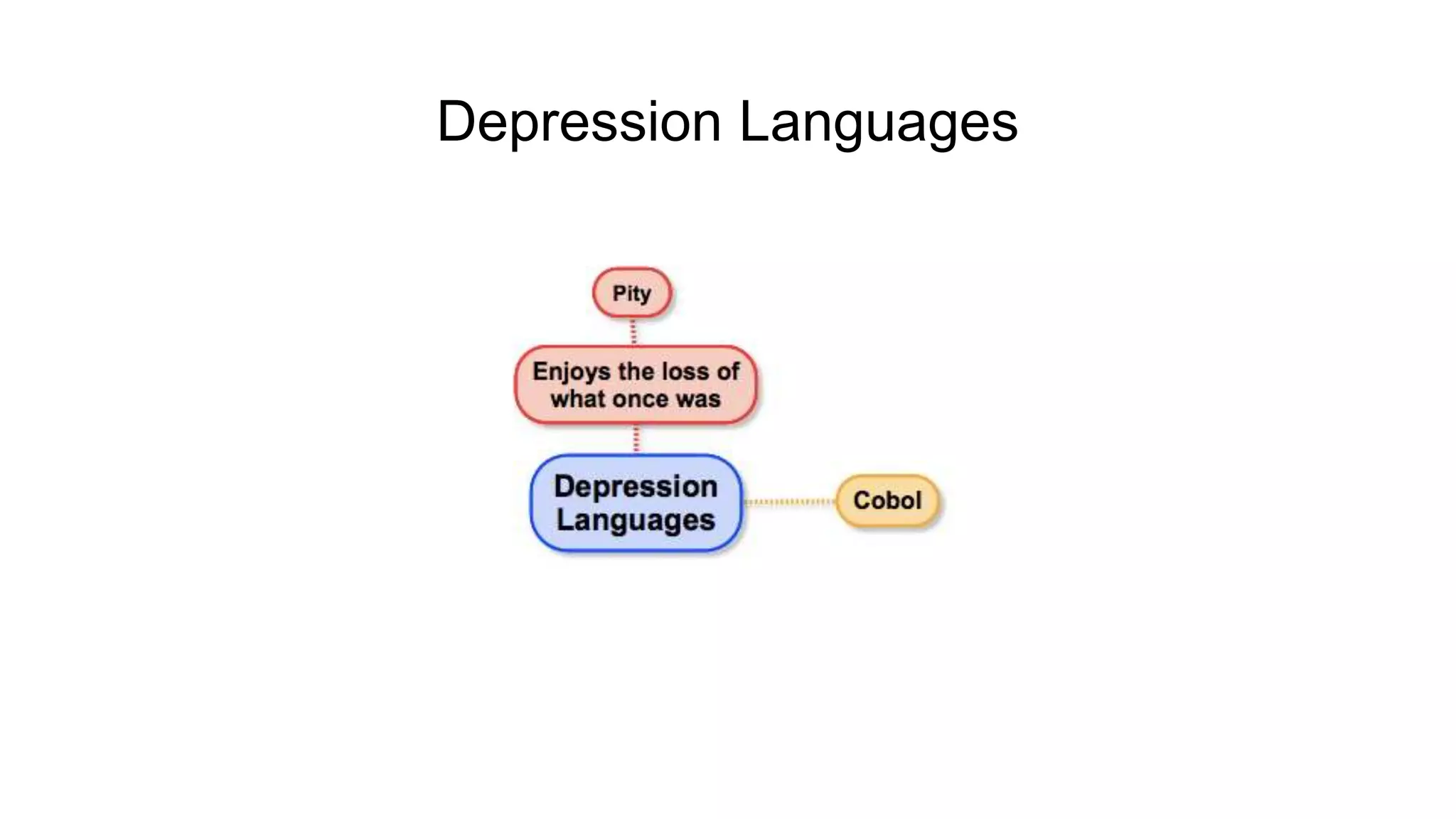The document explores the intersection of psychoanalysis and programming language selection, questioning rationality in language choice through Lacanian and Zizekian critical theory. It identifies the emotional and psychological motivations behind programming language preferences, categorized by structures such as psychosis, perversion, and neurosis. Ultimately, the work aims to enhance understanding of the diverse programming languages available by analyzing them through the lens of psychoanalysis.


